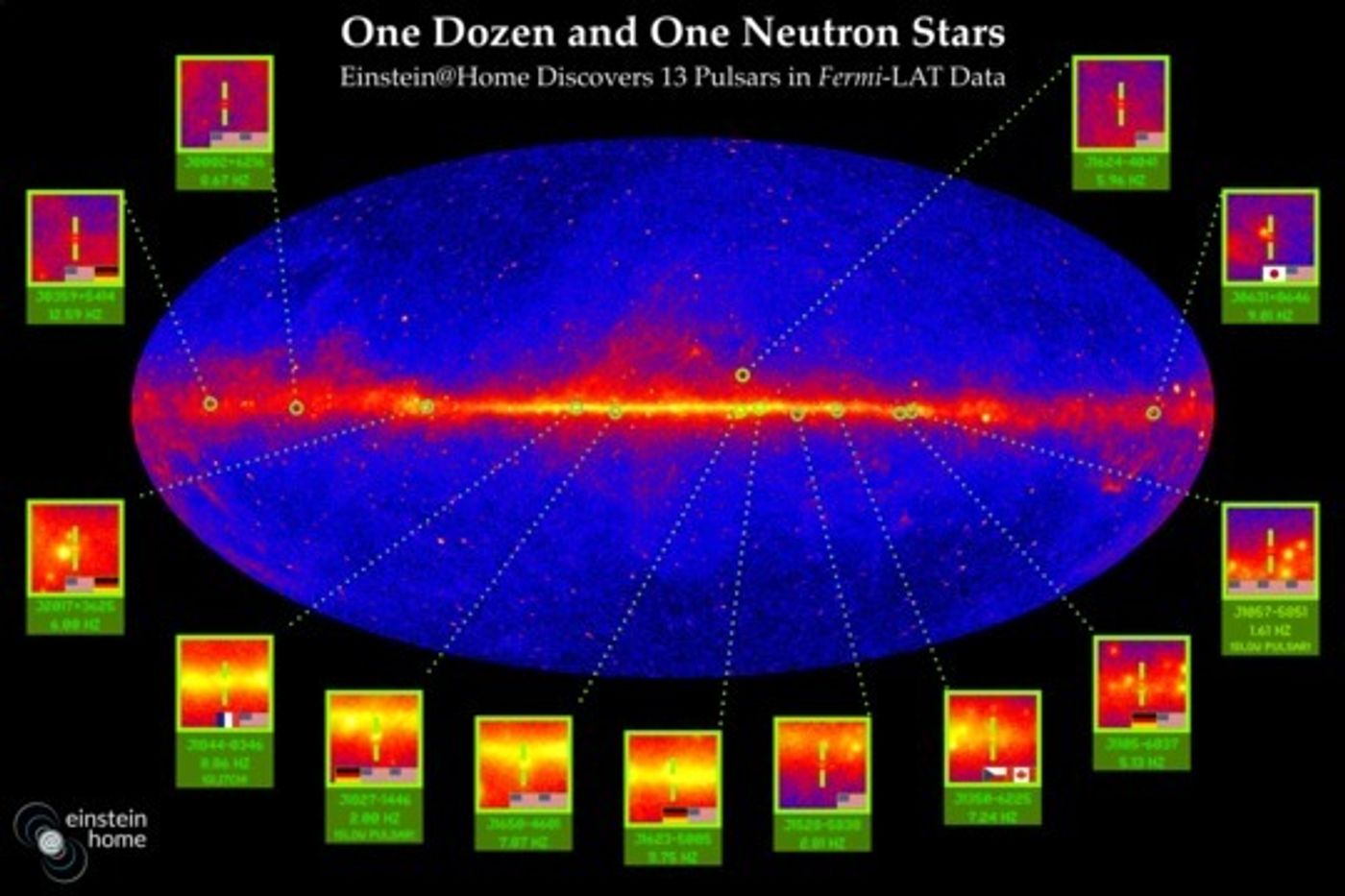Astronomers Find 13 New Pulsars Thanks to the Einstein@Home Project
Because the universe is so vast, examining it up close and in person with the processing power of a single computer is a lengthy and tedious task. That’s why the Einstein@Home initiative was conceived, one that allows ordinary people to dedicate the processing power of their personal computers during idle time to the cause of examining the universe.
So far, the initiative has proven to be quite helpful, providing scientists with an internet-based link to vast amounts of raw computational power. It has already helped to discover interesting things hiding in the depths of outer space, including a double neutron star system. Now, scientists say it has even helped to discover over a dozen new pulsars.
Image Credit: Knispel/Clark/Max Planck Institute for Gravitational Physics/NASA/DOE/Fermi LAT Collaboration
The findings, which appear in The Astrophysical Journal, highlight 13 new rapidly-rotating neutron stars that have been spotted and detailed by the Fermi Gamma-ray Space Telescope.
“We discovered so many new pulsars for three main reasons: the huge computing power provided by Einstein@Home; our invention of novel and more efficient search methods; and the use of newly-improved Fermi-LAT data. These together provided unprecedented sensitivity for our large survey of more than 100 Fermi catalog sources,” said Dr. Colin Clark with the Max Planck Instutite for Gravitational Physics, and the lead author of the paper.
“So far we’ve identified 17 new pulsars among the 118 gamma-ray sources we searched with Einstein@Home. The latest publication in The Astrophysical Journal presents 13 of these discoveries. We knew that there had to be several unidentified pulsars in the Fermi data, but it’s always very exciting to actually detect one of them and at the same time it’s very satisfying to understand what its properties are,” he continued.
According to the publication, Einstein@Home gave the program as much as 10,000 years of CPU processing time of a single CPU thanks to the sheer number of CPUs that were processing information at one given time.
They spent their time observing 118 unidentified pulsar-like sources in the distant reaches of space, where astronomers were able to narrow their findings down to just 17 pulsars; 13 of which were completely new and uncharted.
More interestingly, two of these new discoveries reportedly have the slowest-spinning gamma ray pulses ever discovered, which makes them pretty unique in that detail alone.
While pulsars are pulsating due to their rapidly-spinning qualities, many of them are hard to see still because they’re shrouded by dust and debris from other celestial blockades. While modern space observation is always trying hard to find as many as we can to learn more about them, there are probably so many more out there that have yet to be discovered from this fact alone.
Einstein@Home will continue to help astronomers examine the cosmos, learning more about what’s out there and significantly speeding up the amount of time necessary to make important scientific breaks about our universe.









